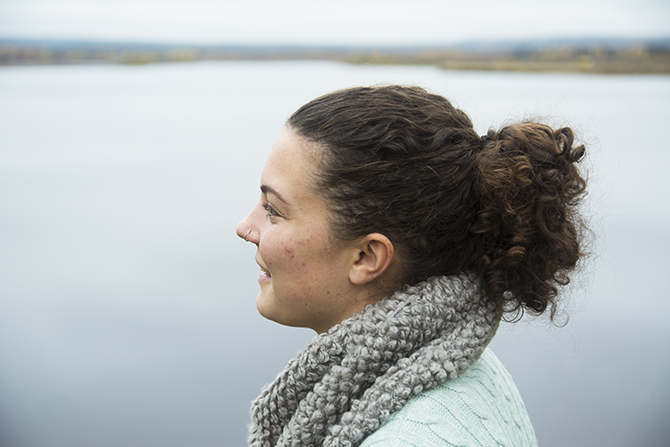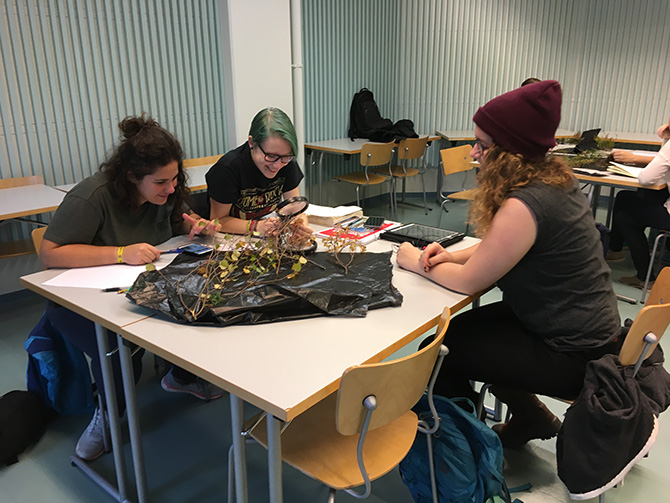ARCTIC STORIES: The Arctic region is the focus of worldwide attention. The Arctic Studies Program at the University of Lapland offers Finnish and international students a unique possibility to learn more about this region from the inside perspective.
The Arctic Studies teaching team consists of experienced researchers of the Arctic Centre, who specialize in Arctic issues and give an in-depth look into the region based on their own research.
“The North is tri-dimensional; it is not only a natural, but also a mental and a social space. We have built the Arctic Studies Program around this triad. Natural scientists teach what Arctic means as a natural space, political and legal scientists consider the region as a space of governance, biologists teach about the animals that live here. The students learn what a reindeer is like as an animal, but also about its symbolic significance for the local population”, describes Dr. Anna Stammler-Gossmann, who is the academic coordinator of the Arctic Studies Program.
“Anthropologists look at the Arctic region from a societal and cultural perspective. We include the mental and the social dimensions of space, and there is a growing interest among the students for this perspective. The students learn about what the Arctic or the North is and where the southern lines of the North are as reflected in existing concepts, practices and images.
“The North is often portrayed as a wonderland of glistening snow, crystalline ice and colorful Aurora Borealis.
“People may have very romantic impressions of the Arctic region. Here these images and realities meet, because we are looking at the North from the inside”, Anna Stammler-Gossmann says.
The Arctic Studies Program provides a more holistic picture of the region and helps the students to understand the environmental and societal changes going on. The study program covers the main geographic, environmental, political, cultural, juridical and economic features of the Arctic.
“We all are passionate about our research”, Anna Stammler-Gossmann remarks. “However, teaching can sometimes be a challenge, as the student group is so diverse”.
Bachelor level students of tourism and postgraduate students in political science are discovering the various facets of the polar regions side by side.

Gemma Holt gets a breath of Arctic air in Rovaniemi. Photo (c) Risto Viitanen.
Fulbright scholar Gemma Holt from Seattle wanted to do a part of the Arctic Studies Program to contextualize what she is doing in her own research. Her research focuses on climate change governance, particularly in the context of science diplomacy - the ways science is used to further diplomatic objectives.
“One reason why I wanted to come to Finland was that it is possible to learn about the policy side of things, but also to learn about the ecosystems. Being up here adds a lot of context and depth to the policy issues. Here I am exposed to what the Arctic environment really is.”
“The Arctic Studies group is very international, there are people from all over Europe, from the U.S., and we even had a group of students from Korea. We just wrapped up our introduction to the Arctic ecosystems, where we looked at the ways that the Arctic flora and fauna have adapted to the Arctic environment and how the climate change is threatening them”, Gemma Holt explains.
“The highlight of the first section was a two day excursion. We visited the Geophysical Observatory in Sodankylä, a hydropower plant and a reindeer farm. This gave us snapshots of different Arctic practices, and combined many of the thematic issues we have discussed in tangible experiences.”
She is looking forward to the Arctic law section, to learn what the national and international laws say about the Arctic.
“This program is a great way of immersing oneself in a focused field. It also gives an opportunity to connect to some of the research that is happening here”.

International exchange students study morphological adaptations of plant samples
during lectures of Dr Minna Turunen. Photo (c) Minna Turunen